Designer Charlotte Moss on the charm of antique chairs and how the spirits of their collectors linger.

Gerald Bland: Why chairs, Charlotte?
Charlotte Moss: In chairs we read, write, think, talk, snooze. In some ways these activities suggest “do not disturb,” which I find a welcome unspoken language that begs politeness from visitors. A group of chairs suggests an invitation to a conversation, while a single chair in a bathroom suggests lingering in privacy. With open arms anticipating your arrival, the chair is the most hospitable piece of furniture in the house. Wing chairs by the fire, slipper chairs by the bed, generous bergères and fauteuils in the drawing room, and of course, the dining chair. Of all the furniture I have chased, purchased, and collected over the years, chairs have held the greatest fascination and allure. Some I have researched, some I have stumbled upon, others have found me. Antiques dealers that I have worked with over the years have called me with compelling stories and their recent acquisitions.
GB: Charlotte, how many years have we known each other, forty? Maybe thirty?
CM: No, definitely forty.
GB: And you have been a collector all that time?
CM: Yes, and longer, but I feel that I am more of an accumulator.
GB: I would disagree. But explain the difference.
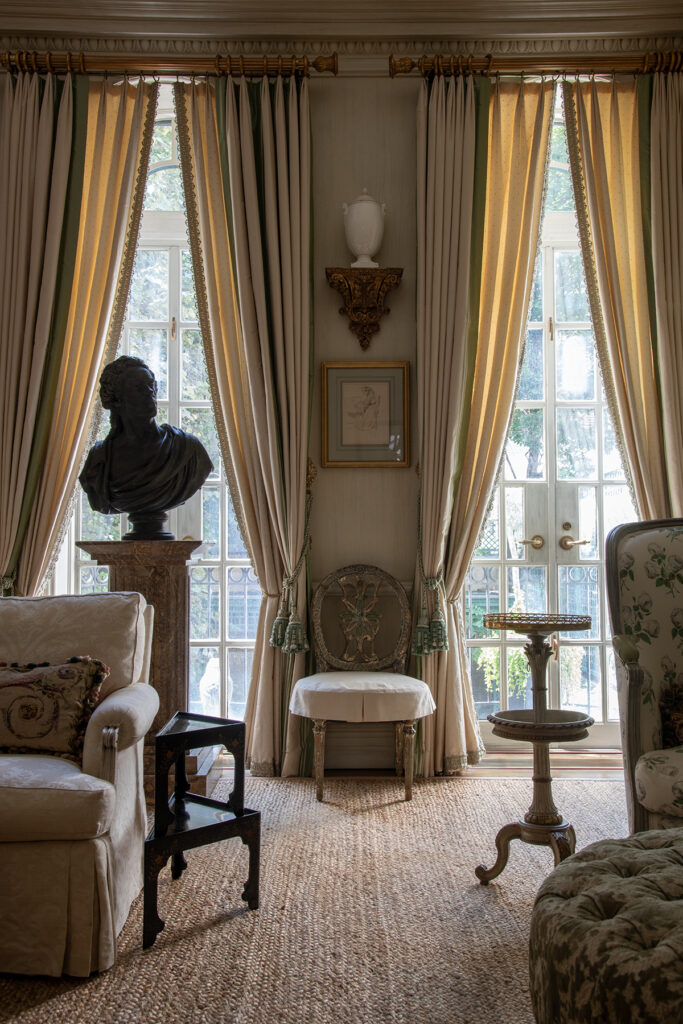
CM: I am a visceral buyer, whether for myself or a client. It’s easier to explain client buying, which I call mission buying. I’m on a mission to find specific things that I hope they will enjoy, things that will excite them, encourage them to collect, and of course, finish the project. It is extremely gratifying, thrilling in fact, to start a client on a collecting path. Of course, I use the same judgment for the client as I would for myself. For example, last year I walked into Robert Kime in London, and Christopher [Payne] had a console and a pair of Empire tole jardinieres. Gerry, you may have seen them in my library in Virginia. They had not yet been priced, but immediately I knew I had to have them, and I knew where they were going. It was love at first sight. There were three pieces, raised on
small plinths to elevate them, and the deep bordeaux color did it!
GB: Yes, you simply responded.
CM: Yes, but I respond negatively as well: bad finish, poor restoration, overpriced. I don’t just go out on a hunt, thinking I’ll buy a fabulous chair or tomorrow, I’ll buy porcelain. I like to keep my options open; my radar is always on. That’s how I’ve bought most things. I joke with my staff that they should put their shopping list under their pillow, sleep with it. That way when you are shopping you can respond to beautiful things, not a spreadsheet. I was just writing about the first interior watercolor I bought.
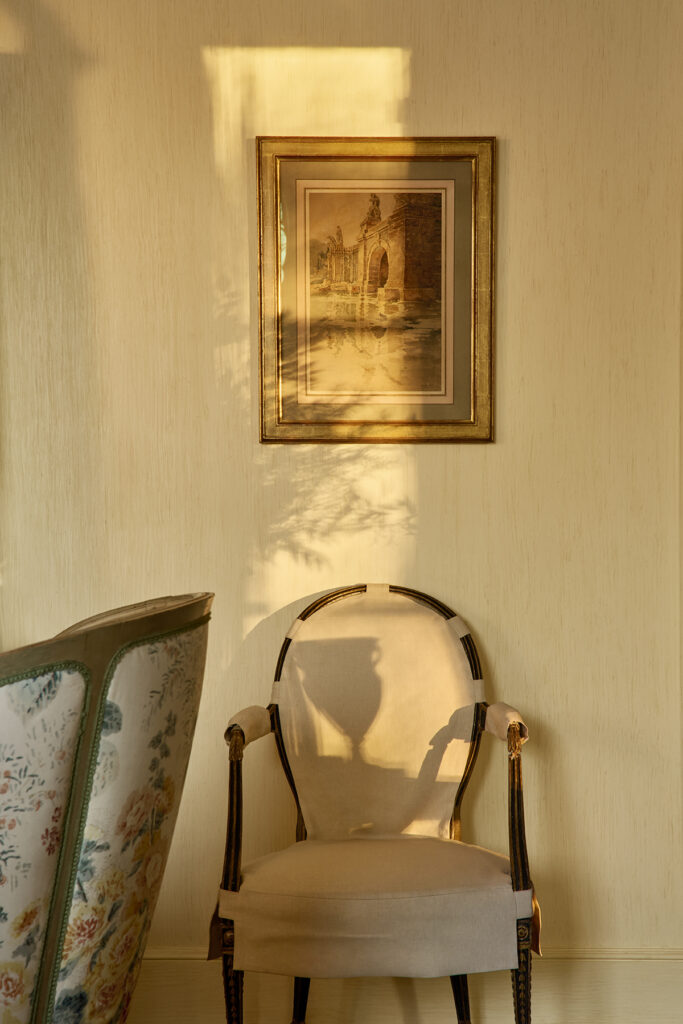
GB: Was that your Venetia Maynard?
CM: No, but her watercolor still hangs in my bedroom. I actually came upon it in a sale at Sotheby’s of portraits. And there, too, a random watercolor interior of Joseph Duveen’s living room by William Ellis Ranken. The Duveen was significant for personal reasons. When I was a banker, my future husband suggested I read about Duveen. He said if I wanted to understand the art business I would enjoy the bookDuveen by [S. N.] Behrman. I now have two treasured interiors by Ranken of Elsie de Wolfe’s music room and bedroom at Trianon.
GB: And he’s a good artist.
CM: Yes, but while I knew about Duveen, I didn’t know William Ranken until I researched him. After that, I flew to LA to attend the Elsie de Wolfe sale at Christie’s. I knew what I wanted to buy, but I also wanted to feel and see the energy in the room. Some sales compel you to be there, to feel the room, feel the excitement. Another auction that I loved was the sale of Tony Duquette’s estate, which took place in an airplane hangar in Santa Monica. Full of familiar faces.
GB: I don’t see you as a fan of Tony Duquette.
CM: Yes and no. I wanted to see everyone at the altar of Tony Duquette. Tony had a lot of bric-a-brac. I bought a collection of obelisks, a group of pagodas, some parcel-gilt urns, and a trellis mirror, which is in East Hampton. That was a fun auction. Seeing what others are interested in, you learn from these experiences. You also learn the need for restraint, sometimes successfully, sometimes not. I certainly had these moments at the Mario Buatta auction.
GB: Speaking of Mario, what do you think he has in common with Nancy Lancaster, Evangeline Bruce, and Bunny Mellon—is it that their things are real and proper?
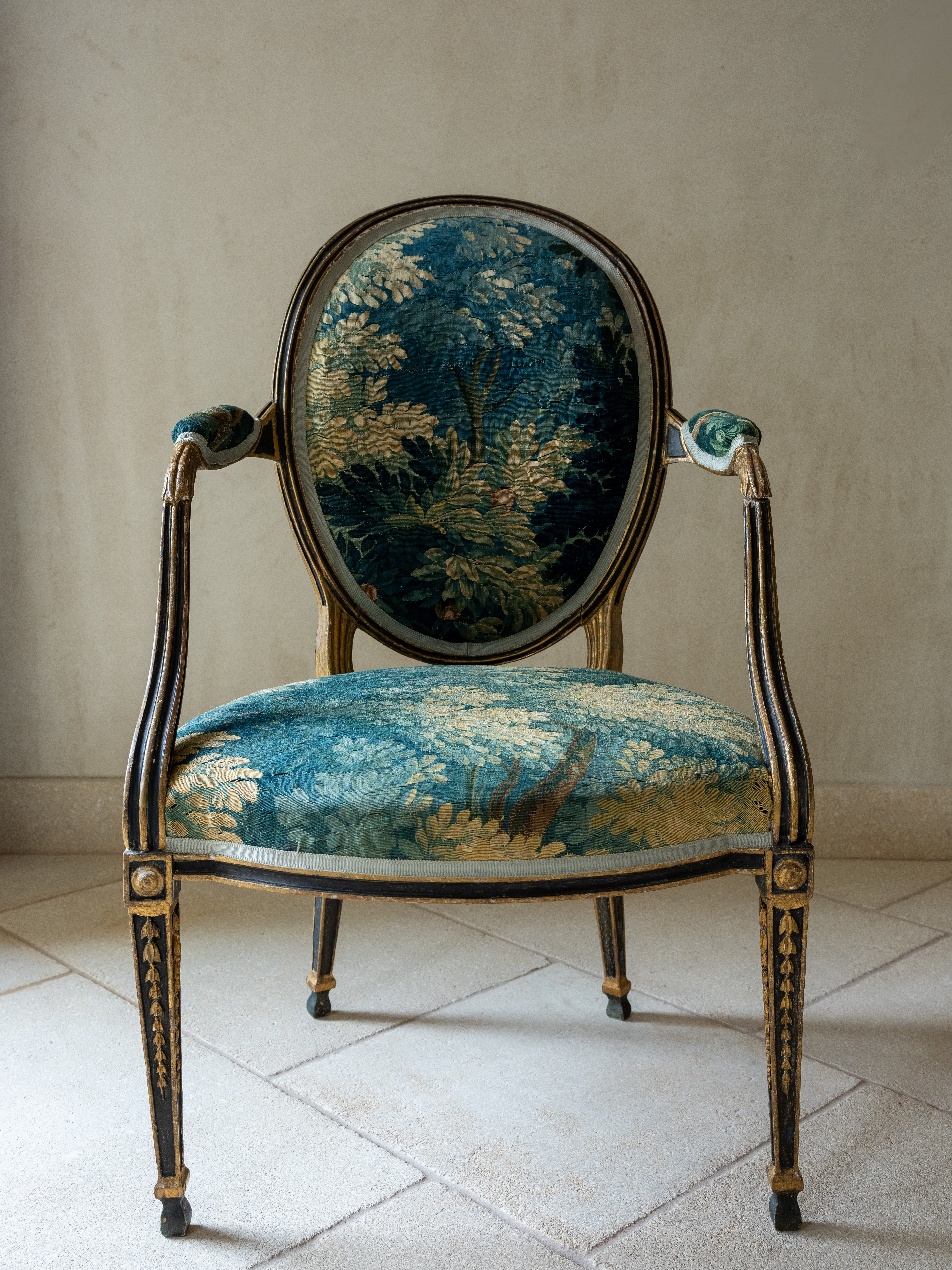
CM: A lot of times, but not always.
GB: Or is it just good taste?
CM: Yes, it is good taste, but it’s also seeing the world through someone else’s eyes. What is good taste really? Billy Baldwin said, “Taste is the common sense of genius.” Well, I’m not sure how I feel about the genius part. Diana Vreeland also said, “a little bad taste is like a nice splash of paprika.” To her, a little bit of bad taste energizes. Conformity and correctness kill me.
GB: But with all these women, plus Mario, their things are good-looking and proper. Maybe some of the Nancy Lancaster pieces were redone but to suit her taste. For example, the pair of Gothic revival chairs you bought from Evangeline Bruce’s sale were repainted by George Oakes. But to my eye that is the reason these chairs are special. I recently Googled the other pair I sold to Mallett, which came up at Christie’s stripped down to their original oak. All charm was lost.
CM: They were painted in Nancy’s bedroom at Haseley Court.
GB: I didn’t know that.
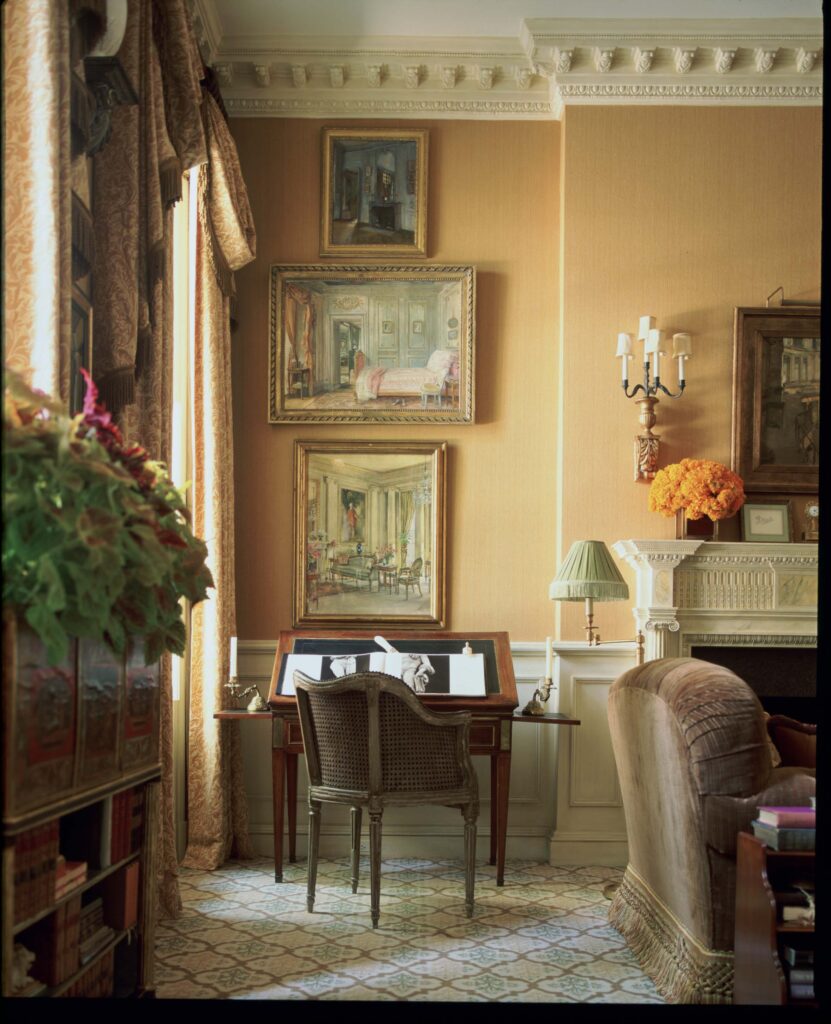
CM: Yes, the style and character of these objects reflect the people who owned them before. I remember the early days when I would shop in London and go to Colefax and Fowler. I would look at a chair and think, I’ve never seen a foot like that, or what an unusual carved back splat. Furniture and objects with a lineage continue to appreciate in my view, that is, their value presumably increases and pages are added to their storybook. But buying solely for provenance is pretentious and will result in rooms that are soulless, meaningless, and vacant. Each owner adds their own story, just like another layer of paint. In owning something you are simply the steward for a spell.
GB: You can go right down the list of dealers you have learned from.
CM: In London alone, Jamb London, Robert Kime, Christopher Butterworth for lighting, Fergus Downey of Vanbrugh for porcelain, Timothy Langston for furniture, lighting, Adam Bentley for antique treasures of all kinds. So many great eyes curating things for the rest of us.
GB: In Will Fisher’s [ Jamb London] case, he certainly runs a common theme: strong, proper early Georgian furniture that will stabilize any space you place it in.
CM: Stabilize is a good word. But it is the opposite of buying from a celebrity auction, so to speak. The passion of the moment gets you every time. If you don’t buy it, you’ll never see it again.
GB: But it’s not just to know someone else has owned the object, or that person has some importance—but all the more interesting if that is the case. For example, in the corner of the room I’m working in is an English upholstered armchair probably from the ‘20s. I am quite sure this is the chair Winston Churchill was photographed sitting in at Ditchley Park during World War II. Regardless, it’s the story my children know and have proudly passed on to their friends.

CM: But you know, we all love history and a good story. Look, we see rooms devoid of history and sex appeal. They’re like furniture showrooms. I personally have a thing for patina and provenance. A chair is a chair, but when the arm is worn from use and it was part of a collection, it has a story, a mystique, and I find all of that compelling. Then there is a cool factor. It’s not like you need this for bragging rights. Obviously, with chairs that came from an auction like that of Bunny Mellon or Doris Duke, the name came first, then the chair. Ultimately it was the shape that drew me, the detail, and honestly, the mystery attached . . . what room did it come from, where did they purchase it? Was it inherited? I’m sitting here looking at a wonderful old French wing chair in my study with Colefax and Fowler’s old rose chintz. It goes with nothing else in the room, but I love it.
GB: But to that point, Charlotte, anything you have would work because these things share your aesthetic.
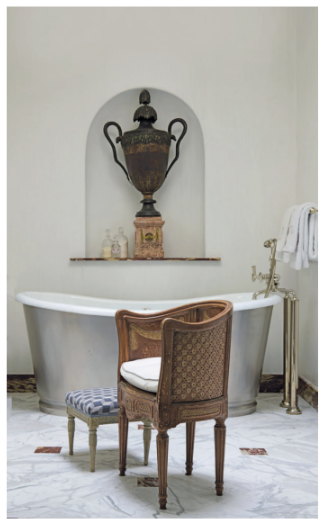
CM: One would hope so. Chairs are accommodating on several fronts. Chairs have to accommodate people of different sizes, which is not without its challenges, but first and foremost a chair accommodates multiple needs . . . dining, writing, watching television, sitting quietly by a fire, or snuggling in an armchair made for reading or needlepointing.
GB: Can you think of others who had a chair fixation?
CM: Well, when Thomas Jefferson returned from Europe after five years there as US Minister to France, he returned with fifty-seven chairs. There are some great chairs at Monticello, his desk chair that I have always coveted, chairs in the salon . . .
GB: Back to some of the women whose chairs you own—and I know you don’t like that as a designation, but I like to think Nancy Lancaster, Evangeline Bruce, and Bunny Mellon were of the same ilk. They all had connections to Virginia and all with very proper Anglo-American taste, developed for the most part by Nancy Lancaster in England.
CM: You know, it’s hard for me to talk about this because I’d be putting myself in that league, and I don’t think of myself like that.
GB: And I think you’re being unfair to yourself. Are there any other women you can think of that were “chair specific,” that is, favored a certain chair or style?
CM: Georgia O’Keeffe: a wooden ladderback. Edith Wharton wrote in bed, but also at her desk at The Mount is an armless side chair. Eleanor Roosevelt’s favorite chair was a colonial style reproduction. Greta Garbo had a chair custom designed by Billy Haines, who was famous for his low-slung chairs that gave every woman the appearance of longer legs . . . we love him for it! Julia Child had a tall stool made for her kitchen. Florence Knoll designed her own now-famous Knoll chair.
GB: Do you think of chairs as form?
CM: I think about chairs all the time, Gerry. I remember when John Rosselli was on 73rd Street, and Furlough [Gatewood] would call me in his deep southern drawl, “Charlotte, we have a shipment coming in today and we have some chairs!” I would drop everything and go there, and there was always at least one quirky little chair to take home. God, I miss those days. There is always a place for a chair. I feel having another chair is a metaphor for having room for another person in your room and your life.

GB: I agree. And if you think why it exists, it was designed to fit human form. So of course it is personal.
CM: Years ago when I was flying to LA, I picked up a copy of a book by Andy Rooney in the airport. One essay was on chairs. He wrote: how on earth can we create chairs all with the same size seat when all of our asses are different? He went on and on about chairs, it was hysterical.
GB: I have many. I develop crushes on chairs all the time.
CM: When I look at the chair that was Lillian Gish’s, for instance, I love that little chair. It’s cool that it belonged to Lillian Gish, but that’s not the reason I bought it.
GB: And the Madeleine Castaing chairs? Do you identify those chairs with her?
CM: Totally. They look as though they’re ready to dance away with those thin crossed legs.
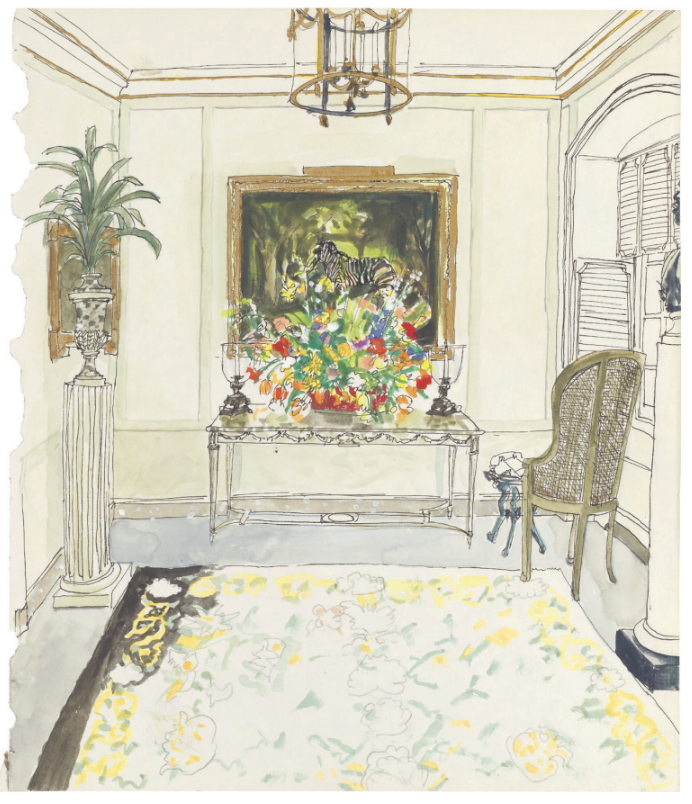
GB: Did you ever meet Madelaine Castaing?
CM: Yes, in her shop in Paris. Complete with wig held on by a chin strap. She would only speak if she thought you were interesting, otherwise you were ignored. More often than not, I’ve bought these chairs based on my “had to have” response. Only afterwards was the owner revealed, which naturally added to the allure and excitement, like the chair I bought from Tony Victoria that came from La Fiorentina and was owned by Mary Wells Lawrence.
GB: She was seriously cool.
CM: Very cool. The chair is now in my dressing room in Virginia. Somehow, I like to believe that these women’s spirits linger. I’ll never forget a quote from her book, which could be said of all of these women, that one “must live life full tilt to the wind.” There you go: the red thread that connects them all. Actually, it was a very potent cocktail of qualities that connected them. They were fearless, intelligent, disciplined, generous, with vivid imaginations. They were interesting people, and I think interesting people seek out and stumble on interesting things. I don’t think interesting people buy boring things—sure, we all have our “bloopers.” But, a lot of people buy boring stuff!
GERALD BLAND operates a New York design firm specializing in fine art and period and contemporary furniture. He also directed the furniture department at Sotheby’s for ten years and ran Stair and Company in New York.

